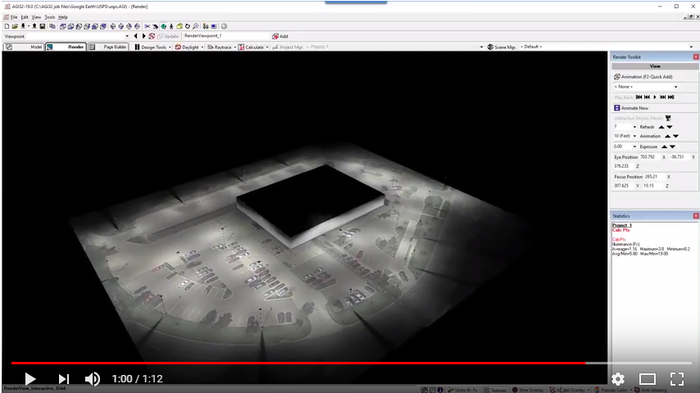Two Calculation Methods Available in AGi32
AGi32 allows you to select from two calculation techniques when simulating a lighting application: Direct Calculation Method and Full Radiosity Method. The use of either method has its merits and is an important choice you will need to make for any application. It is easy to move from one to the other and simply repeat the calculation.
Direct Calculation Method
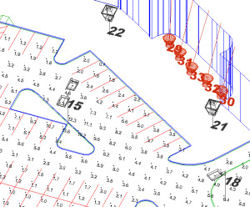
Direct Calculation Method
Direct Calculation Method considers only light directly from luminaires to calculation points and is capable of point-by-point results only, it cannot be rendered. This method lends itself particularly well to exterior lighting projects such as site lighting, roadway and sports applications. It may also be utilized for fast direct light calculations in interior facilities. The obstructive nature of surfaces is considered.
Full Radiosity Method
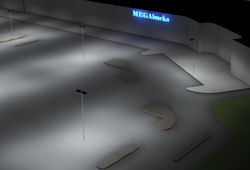
Full Radiosity Method
The Full Radiosity Method enables all features for the accurate computation of interreflected light. Full Radiosity Method is required for interior lighting applications where interreflected light and indirect lighting are important or when rendering is desired. Due to the rigorous nature of interreflected lighting calculations, Full Radiosity Method projects require a little additional run time over Direct Method projects of the same scale.
Switching between Direct and Full Radiosity Method is as simple as a mouse click and can be performed anytime.
Point-by-Point Calculations
Calculation points can be placed in any design file where numerical results are required. Each calculation point represents the placement of a “virtual” light meter measuring the required results. AGi32 allows you to calculate numerous different metrics; Illuminance, Luminance (diffuse), Exitance, Daylight Factor, Unified Glare Rating (UGR), Roadway Luminance, Veiling Luminance, Small Target Visibility (STV) and Glare Rating (GR).
Automatic point generation on workplanes and surfaces
 AGi32 has the ability to automatically place specific grids of calculation points on any surface as well as on designated workplanes. This command is very powerful and convenient and saves the time it would normally take to place a conventional grid of points on the surface and eliminate unwanted points.
AGi32 has the ability to automatically place specific grids of calculation points on any surface as well as on designated workplanes. This command is very powerful and convenient and saves the time it would normally take to place a conventional grid of points on the surface and eliminate unwanted points.
Curved and sloping surfaces are easily accommodated. In fact, using the Automatic Placement command is the method of choice when placing calculation points on irregular surfaces.
Other point generation commands
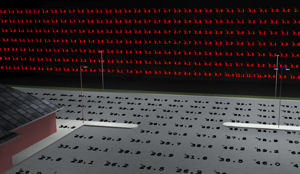 AGi32 can utilize a variety of techniques, such as polygons, grids, lines and single point specification to place calculation points anywhere in 3-dimensional space. These capabilities allow AGi32 to predict or quantify the distribution of artificial light in any environment.
AGi32 can utilize a variety of techniques, such as polygons, grids, lines and single point specification to place calculation points anywhere in 3-dimensional space. These capabilities allow AGi32 to predict or quantify the distribution of artificial light in any environment.
An unlimited number of unique calculation planes can be specified. Calculation points can be aimed in any direction and elevations can be considered to track irregular topography.
Design Isolines
 Real time direct light calculations can make short work out of exterior pole placement! Simply specify your contours and start placing poles!
Real time direct light calculations can make short work out of exterior pole placement! Simply specify your contours and start placing poles!
Mesopic lighting calculations per IES TM-12-12
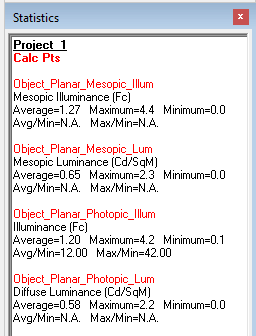 Human visual performance in low-light environments has been shown to improve under whiter light sources (those with S/P Ratio > 1). AGi32 allows lighting professionals to quantify this effect. IES document TM-12-12 provides us with a system to revise our calculations to show this improved visibility.
Human visual performance in low-light environments has been shown to improve under whiter light sources (those with S/P Ratio > 1). AGi32 allows lighting professionals to quantify this effect. IES document TM-12-12 provides us with a system to revise our calculations to show this improved visibility.
The AGi32 implementation of TM-12-12 is valid for exterior environments such as parking areas and residential streets, where speeds are less than 25 mph (40 kph). This is due to the nature of the visual task. The effect of spectrum on vision at mesopic light levels is in off-axis and peripheral vision, both of which play a larger role when the observer is stationary or moving slowly. In addition, the TM-12-12 calculation methodology has not been adopted for roadway lighting, where there may be other factors involved in the computation of adaptation luminance such as observer location, roadway pavement properties and veiling luminance.
Obtrusive Light Compliance
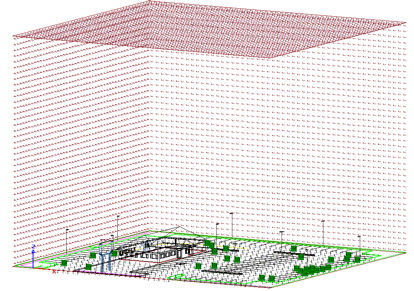 AGi32 supports all of the calculations required for the various international methods for control of light trespass and pollution. These include: the Performance Method of the Model Lighting Ordinance (MLO), LEED SSc6, CIE-150 and AS-4282. AGi32’s Obtrusive Light command can easily create the necessary calculation grids and provide a Compliance Report on a PASS/FAIL basis to submit with your projects. Supported calculations include: vertical illuminance (various locations), Maximum luminous intensity and offending luminaire, Upward waste light ratio, site lumens and Threshold Increment.
AGi32 supports all of the calculations required for the various international methods for control of light trespass and pollution. These include: the Performance Method of the Model Lighting Ordinance (MLO), LEED SSc6, CIE-150 and AS-4282. AGi32’s Obtrusive Light command can easily create the necessary calculation grids and provide a Compliance Report on a PASS/FAIL basis to submit with your projects. Supported calculations include: vertical illuminance (various locations), Maximum luminous intensity and offending luminaire, Upward waste light ratio, site lumens and Threshold Increment.
Pavement Luminance
The Roadway Optimizer tool and Roadway Luminance commands calculate pavement luminance and all associated quantities using IES RP-8-2014, CIE-140, BSEN-13201, AS1158-2-2005 and NZ1158-2-2005 standards.
Illuminance -vs- Luminance
The average pavement luminance is influenced by three factors: the quantity and direction of light, the observer location and the reflective characteristics of the pavement. Illuminance, on the other hand, measures the light incident onto the pavement surface regardless of the observer direction or pavement reflectance.
Both Illuminance and Luminance design criteria are widely used globally and there is certainly a strong relationship between the two metrics. However, it is possible to meet the illuminance criteria yet be substantially far away from the recommended luminance guidelines. AGi32 provides both of the calculations and more to ensure your projects meet specifications.
Reflective and obstructive surfaces
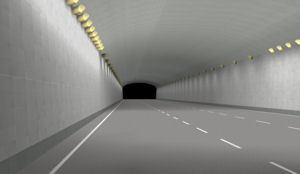 The Roadway Luminance calculation can take reflective or obstructive entities around or within the luminance grid into account, per IES RP-22-2011 recommendations. This is also true for the associated illuminance and veiling luminance calculations. Surfaces that are to be included in the Roadway Luminance calculations must be assigned a special surface type (Roadway Contributor). The Roadway Pavement may also be visualized for rendering purposes by assigning it a special surface type as well (Roadway Pavement – Direct Flux Only). Surfaces may be composed of 3D Entities imported into AGi32 or created using AGi32 entities.
The Roadway Luminance calculation can take reflective or obstructive entities around or within the luminance grid into account, per IES RP-22-2011 recommendations. This is also true for the associated illuminance and veiling luminance calculations. Surfaces that are to be included in the Roadway Luminance calculations must be assigned a special surface type (Roadway Contributor). The Roadway Pavement may also be visualized for rendering purposes by assigning it a special surface type as well (Roadway Pavement – Direct Flux Only). Surfaces may be composed of 3D Entities imported into AGi32 or created using AGi32 entities.
Photosynthetic Photon Flux Density (PPFD)
PPFD is the preferred lighting calculation for plant growth. AGi32 allows the quantity to be computed for any calculation point grid applied with the Automatic Placement command. Appropriate factors for various sources can be selected from a menu or your own applied if already known.

